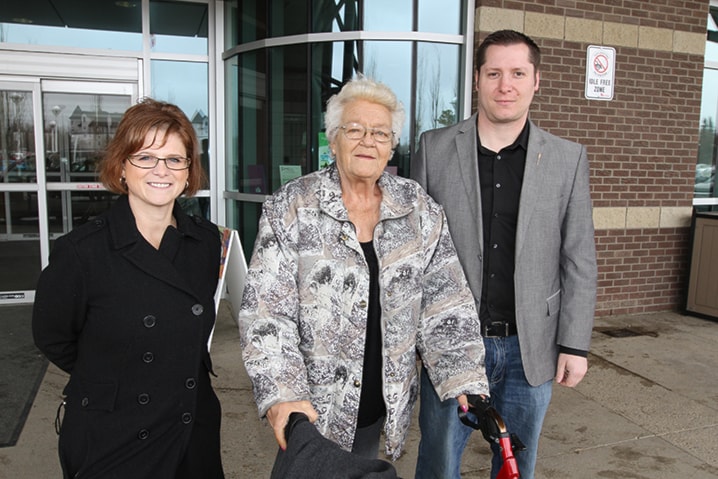Red Deer dialysis patients will no longer be asked to travel outside of the city for treatment, says Alberta Health Services.
The dialysis unit has been operating over its capacity to treat 120 patients per week for several months, forcing some patients to drive to outlying units such as Rocky Mountain House and Wetaskiwin for the essential treatment that is required three times a week. The treatment takes four hours each time.
According to a media release on Friday, “additional dialysis capacity will be added in the short term at Red Deer Regional Hospital Centre; a solution that has been in the works for several weeks.”
No further details on how this space has been created were provided.
AHS said three patients were travelling outside of Red Deer for treatment. They will now receive treatment back in Red Deer. Two of these were single women, one 53 and the other 75, who went public with their plight earlier this week.
Another patient, Paul Norvila, from Rimbey, had been going to Red Deer for the past 11 years for dialysis. He was told on April 4 that he and his wife June would have to drive to Wetaskiwin for dialysis.
AHS said it is reaching out to all Red Deer dialysis patients, “to explain the capacity challenges we are currently facing, and to reassure them that they will not have to travel for treatment.”
In the longer term, AHS said it is “working hard to find a solution that will provide further dialysis capacity in Red Deer.”
Rosalie Thon of Sylvan Lake said that while she is glad to be back for dialysis in Red Deer, she has “lost all respect for Alberta Health and the Alberta government.”
Thon, who drives herself to and from each dialysis appointment, was told earlier this month that she would have to go to Rocky Mountain House instead of Red Deer for the treatment. She tried the longer run once and said she would not drive to Rocky again; that she would contemplate completely quitting dialysis instead of endangering herself and others by getting behind the wheel for 45 minutes after the draining treatment.
Dialysis is an artificial means to remove waste from the blood for those who have lost the function of their kidneys. Without it, the patients will die.
On Thursday, Thon was told she could come back to Red Deer but that her dialysis schedule would change from evenings to mornings.
“I wonder why all of a sudden they’re not moving anyone now,” Thon said. “I still have a hard time understanding why they picked me in the first place and disrupted my life but I guess we have to start a new chapter and move on.”
Kerry Towle, Wildrose MLA for Sylvan Lake-Innisfail, was outside the Red Deer hospital on Friday morning along with Lacombe-Ponoka MLA Rod Fox expressing their concerns for dialysis patients at the facility. They met with 75 year-old dialysis patient Joyce Reynolds of Sylvan Lake, who was told almost two weeks ago that she would have to have her next treatment session, scheduled for Tuesday, in Rocky.
Reynolds told the Advocate that if she had to continue travelling to Rocky in the winter time, she would rather stop dialysis. That decision would leave her with two weeks to live, she said.
Towle and Reynolds were scheduled to meet with Alberta Health Services vice-president for the Central Zone Kerry Bales on Friday morning to talk about options, just before AHS released its statement announcing that all further travel for dialysis patients outside of Red Deer had been stopped.
Towle said the limited renal infrastructure problem is an issue across the province. But she said the thing about Red Deer is that it was “no secret” that there was a 10-year time line to the unit’s capacity and plans should have been undertaken.
“You can put a mobile dialysis unit on the floor fairly quickly, we know. ... We have floors in this hospital that are empty. Maybe move bureaucrats out of their offices and put in dialysis units if that’s what needed. It’s not that hard to do if you make it a priority,” Towle said.
“It’s really hard for Albertans to understand how we are facing this issue in Alberta when they (the provincial government) have no problem spending a billion dollars on severance packages and coaching and contracts and none of it is going to direct patient care. It’s mind boggling.”
rfrancoeur@www.reddeeradvocate.com
